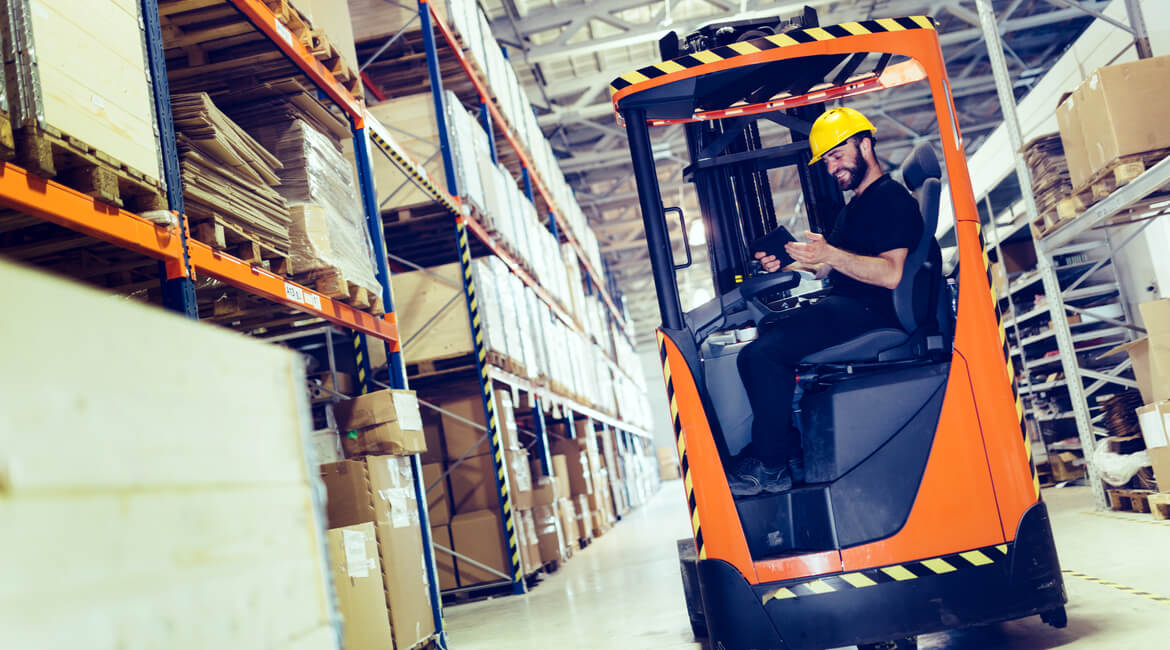Industrial workplace safety with IoT and RTLS

Unfortunately, workplace safety is a subject that’s always topical in our Country. It was even more so in 2021, when there was an average of three deaths per day as a result of workplace accidents (according to Inail data). The number of total accidents is even bigger: between January and October 2021 in fact, there were 448.110 reported accidental damages, with a growth of 6.3% compared to the same period in 2020.
Many of the cases covered by national media led people to reflect on the importance of compliance with safety measures in workplaces and on the need to avoid unnecessary risks.
Workplace safety: what companies can do
Not wearing a safety helmet, machinery not complying with safety standards or operations being carried out without proper precautions: in a complex workplace such as the industrial one, a distraction is enough to put your own safety and that of others at risk.
The automation technologies have, on one hand, added additional complexity to this scenario. In fact, the interaction between “machines” and human beings requires companies to pay even more attention to safety in industrial settings.
However, technologies also offer support to companies in safety protection of workers and in compliance with current regulations. This is the case with IoT (Internet of Things) technologies and in particular Real-time Locating Systems (RTLS), which help to significantly reduce the risk of accidents.
IoT and RTLS, benefits for companies
The Internet of Things technologies are increasingly popular in industrial settings. The ability to constantly monitor data from production settings and machinery allows to manage the facility and all processes in a more efficient way.
The integration of industrial IoT system with RTLS devices (Real-time Locating System) enables additional benefits for companies. Thanks to these devices, in fact, it is possible to locate (directly and indirectly) and track workers, machinery and objects.
RTLS devices use different technologies (Bluetooth, GPS or Ultra wideband) to detect location of workers and machinery in the different areas of the facility.
The benefit of using these devices lies in their tracking possibility, which takes place in real time and without interruption throughout the working day.
In addition, the very small size of these devices facilitates their use on different machines and in different industrial areas.
Workplace safety, how to improve it through direct tracking of workers
Used for the direct tracking of workers, these devices allow to enhance safety in workplaces, in full respect of their privacy. They can be used, for example, to ensure that employees wear the personal protective equipment.
In addition, these technologies also improve the management of spaces within the facility. In fact, they allow to regulate accesses to certain areas without having to use physical obstacles.
To these advantages is added that of offering a better (and faster) assistance in case of accidents involving lone workers. These devices allow a bi-directional transmission of alarms, signals, and calls.
The injured worker, if conscious, can then use the RTLS device to ask for help. Even in the case of loss of consciousness, these devices allow man-down monitoring, sending an emergency call anyway.
This helps increase the safety in workplaces also for those technicians (for example maintenance personnel) who operate in remote areas of the facility.
Safer human-machine interaction thanks to RTLS systems
An extremely important way to prevent dangerous situations arising from the co-presence of machinery and workers comes from collision avoidance systems. These, installed on handling equipment that circulates within the facility, help significantly reduce accidents.
Thanks to location tracking, these systems can calculate – with extreme precision, accuracy in real time – the distance between two vehicles or between a vehicle and a worker.
When this distance is reduced, both the device on the vehicle and the device with which the worker is equipped signal the danger. If the distance is further reduced, the system may even intervene to reduce the speed of the vehicle.
Thanks to these characteristics, anti-collision systems become strategic assets in facilities where there are areas with heavy traffic or blind spots.
Integrating RTLS devices with locating softwares: the benefits
RTLS systems include, apart from devices, also locating softwares that use the data collected by devices to provide strategic information – such as the analysis of a team’s composition or the inventory of handling equipment available in the facility.
Moreover, the company can analyze logistics flows in the different areas of the facility to redesign spaces in the perspective of a greater safety and efficiency.
The same applies to reports on near-miss events, i.e., nearly occurred accidents. These can highlight problematic areas of the facility and help the company to intervene before an accident actually occurs.
